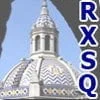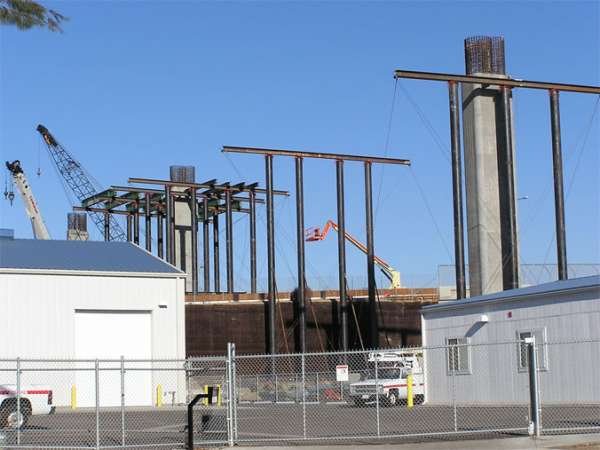Tracing the Riverside roots of Security Pacific National Bank

Prior to its 1992 merger with then San Francisco-based Bank of America, Los Angeles-based Security Pacific National Bank had become one of the nation’s largest banking institutions. It also had several branches — and deep roots — in and around Riverside.
In April 1973, Security Pacific National Bank (SPNB) opened an 11-story branch/office tower in downtown Riverside to house the bank’s rapidly-growing Inland Division headquarters. The division was the result of several local bank acquisitions and consolidations spanning 50 years, the last being when Security First National Bank (the forerunner to SPNB) acquired Riverside-based Citizens National Trust & Savings Bank.*
At the time of the 1957 acquisition, Citizens Bank had grown into the largest Inland-based bank and one of the largest locally-owned banks in California outside of San Francisco, Los Angeles, and San Diego:
…Citizens has 26 branches (14 are in Riverside County) and $215,000,000 in resources … (and) has attained an unusual size for a non-metropolitan regional bank and for this reason, and for its progressive policies, it has attracted wide attention in banking circles.
(The Press-Enterprise, 09/11/1957)
Founded by Riverside businessman S.H. Herrick, Citizens Bank of Riverside opened in June 1903 with $50,000 in capital and nearly $15,000 in deposits, this according to a Press-Enterprise report on the bank’s 50th anniversary in 1953. (By 1953, deposits had grown to $105 million. Incidentally, two of the bank’s initial commercial customers were the then-separate newspapers, Riverside Press and Daily Enterprise.)
Originally located at the northwest corner of Ninth and Main streets in downtown, the bank soon expanded, adding an Arlington branch in 1904.
By 1907, shortly after acquiring Riverside-based Orange Growers National Bank and increasing its capital to $150,000, Citizens Bank gained its national charter, becoming Citizens National Bank of Riverside. That same year, Citizens also established a separate bank — Security Savings Bank — at the southwest corner of Seventh (now Mission Inn Ave.) and Main streets. This new “savings” affiliate allowed the bank to expand into other lending areas that were restricted by its national charter.

Upon acquiring Orange Growers, Citizens moved from its original home at Ninth and Main streets into Orange Growers’ much more stately Evans Building located at the northeast corner of Eighth and Main streets. The building — one of Riverside’s most ornate early buildings — began life in 1891 as Riverside National Bank, which had closed during the national banking panic of 1893.
In 1916, Citizens Bank grew again by acquiring First National Bank of Riverside (not to be confused with the long-closed Riverside National Bank from 1891). Upon the acquisition, Citizens again moved into the former bank’s much larger, 4-story building located directly across the street at 3800 Main. The move allowed Citizens’ affiliate — Security Savings Bank — to move from Seventh and Main into the Evans Building, thereby giving Citizens the two prime corners at Eighth (now University) and Main streets.

Between 1933 and 1957, Citizens continued growing while acquiring several local banks, including those in the cities of Corona, Hemet, Banning and Apple Valley. During this time, Citizens also expanded its branch network in Riverside as well as throughout the Inland region, including Barstow, Blythe, Cathedral City, Colton, Fontana, Highland, Loma Linda, March AFB, Palm Springs, Perris, Redlands, Rialto, Rubidoux, San Bernardino, Twentynine Palms and Yucaipa.
In the early 1940s, Citizens enlarged its downtown headquarters at Eighth and Main by expanding east along Eighth Street (University Ave.). The expansion took place directly behind the bank’s 3800 Main Street building on the site of the former Covert Building, which was demolished due to structural issues.

In 1954, Citizens consolidated its separate Security Savings Bank affiliate into the parent bank, thereby relinquishing the Evans Building across the street on the NE corner of Eighth and Main. (The Evans Building itself was torn down in 1964, leaving a small parking lot that exists to this day.)
Upon its 1957 purchase by Security First National Bank (soon-to-become SPNB in 1967), Citizens’ president — Elden Smith — described the bank’s 54 years of local service as stemming from its philosophy of being “small enough to know you, large enough to serve you, strong enough to protect you.” And although Citizens had grown into one of the larger banks in California — and at the time listed as the 135th largest in the nation — Smith foresaw the increasing dominance of the much larger national banks:
Smith said (Citizens) could undoubtedly retain its complete independence indefinitely. But whereas the bank now enjoys cooperation from most large banks of California and elsewhere … this situation probably will not continue.
(The Press-Enterprise, 09/11/1957)
Having strong allegiance to both Riverside and the Inland region, Mr. Smith was instrumental in making the newly-absorbed Citizens Bank an autonomous division within the much larger Security First National Bank. As such, the Inland branches were known for several years as the Citizens Division of Security First National Bank.
(Mr. Smith’s allegiance to downtown Riverside was later honored via the Elden Smith Memorial Fountain installed on the Main Street Pedestrian Mall directly in front of the former Citizens Bank HQs. However, the fountain was removed during the mid-1990s: 2007 | 2009)

In 1958, shortly after the acquisition, the division HQ at 3800 Main Street was remodeled inside and out. The mid-century designs — ground marble aggregate and Byzantine tiles — of Los Angeles-based architect Welton-Becket remain apparent today (one | two | three).
Later, after the passing of Smith, the regional branch network continued growing, eventually becoming the Inland Division of Security Pacific National Bank. It would move its local headquarters (in 1973) into the aforementioned 11-story bank tower in downtown Riverside, which sat diagonally across the street from the previous headquarters building at 3800 Main Street.

Officially known as Security Pacific Plaza, the new Robert O. Clements-designed building took up an entire city block on the west side of the Main Street Pedestrian Mall between Seventh Street (now Mission Inn) and University Avenue. An adjacent 3-level parking structure along Market Street was completed in 1975. Previously, the block contained several smaller structures, including Riverside’s oldest brick building — the B.D. Burt & Bros. store located at the NW corner of Eighth (now University) and Main streets.
For nearly 20 years thereafter, Security Pacific National Bank grew into the Inland region’s primary “national” bank, with its Inland Division playing an important role in local civics and philanthropy. However, in April 1992, both Riverside and the Inland region lost one of its major corporate operations when Security Pacific National Bank merged into Bank of America.

At the time, it was the largest bank merger in the nation, as both California-based banks — SPNB in Los Angeles and BofA in San Francisco — formed the nation’s then-largest bank. (BofA has since merged again with Charlotte-based NationsBank, which is today’s “new” Bank of America, again one of the nation’s largest.)
The 1992 merger removed the Security Pacific Bank name from the nation’s banking landscape as numerous SPNB and BofA branches were consolidated. In most cases, the SPNB branch closed and accounts were transferred to the nearby BofA branch. In some cases, however, the opposite took place with the SPNB being re-signed as a BofA. Many of the remaining SPNB branches became expansion opportunity for other banks.
In 2004, the “security” name returned to Riverside’s banking landscape as a new bank, with ties back to the local offices of Security Pacific National Bank, was formed. The bank, which has a similar name — Security Bank of California — has its main office in downtown Riverside, with branches in Redlands and San Bernardino.

Today, Citizens’ former downtown Riverside HQ is home to UCR’s Sweeney Art Gallery while SPNB’s Security Pacific Plaza tower is now known as the California Tower, housing several state offices, various street-level businesses and one bank — First National Bank of Southern California (itself formerly known as Inland Empire National Bank). The former SPNB branch located at the base of the tower sat vacant for a few years before becoming a series of restaurants, the most recent being Phood on Main. (The bank’s old vault remains visible on the outside patio area.)
So, the next time you visit your Inland branch of Bank of America, you might just be stepping into a former Security Pacific National Bank branch, which itself, could very well trace its heritage back to Riverside’s Citizens National Trust & Savings Bank.
In the meantime, check out the video below of a 1981 Security Pacific Bank television commercial that mentions Riverside.
__________
Below are recent photos of all nine former Security Pacific National Bank branches within Riverside as listed in a 1979 advertisement from a Greater Riverside Chamber of Commerce publication, three of which are current BofA branches (including the 4601 La Sierra Ave. branch, which was a replacement SPNB branch for 4860 La Sierra Ave.).
*Note: Riverside’s Citizens NT&SB bears no relation to a Los Angeles-based bank of the same name that moved into the Riverside region during the early 1960s. That bank, which opened Riverside’s first modern, mid-rise office tower in 1965 — an 8-story building located at Eleventh and Main — eventually became part of the now-defunct Crocker Bank, itself later absorbed into Wells Fargo.
Images courtesy of: Greater Riverside Chamber of Commerce, City of Riverside, Riverside Press-Enterprise, Riverside Fire Department, Riverside City College
Sources: City of Riverside, The Press-Enterprise, Greater Riverside Chambers of Commerce, Los Angeles Times

